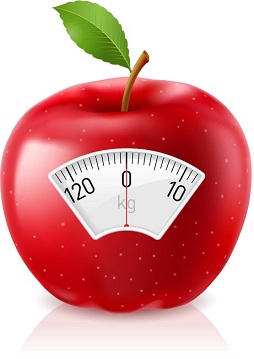
 From Your Health Journal…..”A wonderful story in the Huffington Post written by Dr. Ayala Laufer-Cahana, who did a wonderful job discussing healthy snacking at school. She starts off by discussing how the USDA is setting new guidelines / standards with regards to snacks sold at school. Chips, soda, cookies, and cake may be a thing of the past, with introductions to more whole grains, fruits, and veggies. The author questions whether or not these changes will make a difference? On top of healthier lunches and snacks, healthier choices would also be needed for extra-curricular activities such as fund raisers and team sports. Some states, such as California have already implemented this type of change. The Californian students took in 158 fewer calories a day, overall. A reduction of 158 calories is a big deal, as we gain weight very gradually, and reducing even 100 calories a day can prevent weight gain and put a dent in the obesity crisis. This change is very important, and hopefully, will have a huge impact on the health of all students on the national level. Heart disease and obesity is on the rise all over the world, so this could have a very positive impact on the health of children. Please visit the Huff Post web site (link provided below) to read the complete article. It is one of my favorite sites on the net, rich in many quality health stories – – so I always try to bring traffic their way.”
From Your Health Journal…..”A wonderful story in the Huffington Post written by Dr. Ayala Laufer-Cahana, who did a wonderful job discussing healthy snacking at school. She starts off by discussing how the USDA is setting new guidelines / standards with regards to snacks sold at school. Chips, soda, cookies, and cake may be a thing of the past, with introductions to more whole grains, fruits, and veggies. The author questions whether or not these changes will make a difference? On top of healthier lunches and snacks, healthier choices would also be needed for extra-curricular activities such as fund raisers and team sports. Some states, such as California have already implemented this type of change. The Californian students took in 158 fewer calories a day, overall. A reduction of 158 calories is a big deal, as we gain weight very gradually, and reducing even 100 calories a day can prevent weight gain and put a dent in the obesity crisis. This change is very important, and hopefully, will have a huge impact on the health of all students on the national level. Heart disease and obesity is on the rise all over the world, so this could have a very positive impact on the health of children. Please visit the Huff Post web site (link provided below) to read the complete article. It is one of my favorite sites on the net, rich in many quality health stories – – so I always try to bring traffic their way.”
From the article…..
The days of snacking on candy, soda and chips in schools may soon be over. Last Friday, the U.S. Department of Agriculture (USDA) announced new proposed standards for snacks sold at schools. The standards limit the amount of calories, fat, sugar and sodium of most foods sold at school and encourage whole grains, low fat, fruits and veggies. A few examples: Yogurt, granola bars, trail mix, dried fruit and fruit bars, pizza on whole grain crust and baked potato chips are in. Candy, soda, sweetened fruit juice, and most cookies are out.
Perhaps anticipating the backlash, the proposal exempts fundraisers, after-school sports events and treats sent by parents — including birthday and holiday party goodies. It also allows for a yearlong transition.
The rules, required under the child nutrition law passed in 2010, are an effort to combat childhood obesity and close an obvious loophole: While the government-subsidized school lunch has to comply with nutrition rules, what’s sold a la carte, in school stores, snack bars, or from vending machines and competes for kids’ stomach share and lunch money, isn’t federally regulated at all and can be of no nutritional value whatsoever.
Is it going to make a difference?
Is there evidence that stricter rules at school will encourage kids to eat less junk? Since many states and cities have already established regulations regarding foods sold at schools, there are already some comparisons that can be made.
California was one of the first states to implement rules for vending and selling foods in schools; these rules limit the caloric content, fat and sugar in snacks and ban soda and sweetened beverages. Last year I reported on a study in the Archives of Pediatric & Adolescent Medicine that compared California high school students’ daily intake to the intake of students from 14 states without any school nutrition standards and showed that California kids ate fewer calories and consumed less fat and sugar per day at school — 170 fewer — compared to high school students in other states.
To read the complete article…..Click here
